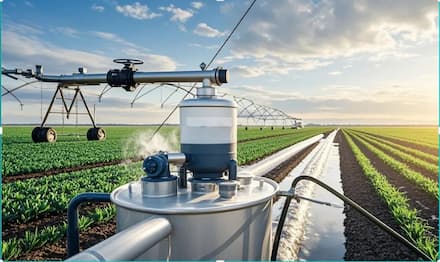The Impact of Defoamers on Agricultural Efficiency - Rickmanchemical.com
Foam control is an often-overlooked challenge in agriculture that can disrupt processes and reduce efficiency. Whether it occurs during pesticide application, irrigation, or fertilizer production, foam can lead to blockages, inconsistent applications, and delays, all of which increase costs and reduce productivity.

Foam formation occurs during the mixing, spraying, and application of agricultural chemicals like pesticides and fertilizers. In irrigation systems, foam can create blockages, reducing water flow and negatively impacting crop health. During pesticide and fertilizer production, foam can affect the quality and consistency of the final product, leading to wastage and inefficiencies.
How Defoamers Improve Agricultural Processes
Defoamers, or antifoaming agents, help by preventing or rapidly breaking down foam, ensuring smooth operations. Their applications include:
1.Pesticide Applications: Defoamers ensure even, accurate pesticide spraying, improving efficacy and reducing waste.
2.Irrigation Systems: By preventing foam-related blockages, defoamers help maintain efficient water delivery to crops.
3.Fertilizer Production: Defoamers keep production lines clear, ensuring consistent quality in liquid fertilizers.
Benefits of Defoamers in Agriculture
Incorporating defoamers into agricultural processes reduces downtime, improves product uniformity, and increases the efficiency of chemical applications. By minimizing foam, defoamers enhance productivity while reducing costs, waste, and environmental impact, making them an essential tool for modern, sustainable agriculture.
Click on the related products links:RK-8KD(Silicone Antifoam For Agriculture) / RK-35T(Hydroxyl Compound Foam Control Agent)
评论
发表评论